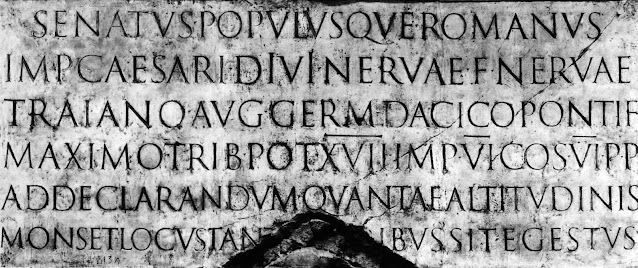 |
| by Martha Slavin |
A to Z: The First Alphabet
A to Z: How Writing Changed the World
If you haven't seen this 2-part documentary yet, find it on PBS' NOVA. You will discover how writing and the need to share our thoughts changed our world, created a path to equality, led to our Constitution, and the development of computers.
We are wired to communicate with each other, share our ideas, and to make decisions together. Written language can be found in the pictorial writings in Ancient China, Mesopotamia, Mesoamerica, Ancient Egypt, and Indic scripts, which show us that from early civilizations, we needed to communicate with each other beyond our own small groups.
 |
| courtesy of the Historyofinformation.com |
When the Roman Empire dissolved and sources of papyrus disappeared, scribes turned to parchment, which is made from animal skins. Because parchment has a different surface than papyrus, writing became more laborious and expensive to produce, thus limiting the number of people in the Western world who had access to the written word. Paper, invented in China, did not find its way West until the crusaders' conflicts with the Ottoman Empire. Not until Guttenberg developed a printing press with moveable metal type did reading become readily available in the Western world.
As in the West, social systems in China and other parts of the world created disparities in literacy. But progress in both China and in the Ottoman Empire led to Gutenberg's invention, which allowed ideas and materials to more easily spread around the world. Printing presses, for the most part, these days, are consigned to museums as we have become a digital world, but we continue to find ways to connect together so that our ideas flow from one group to another.
Those of us who learned to print and then connected letters into cursive may mourn the fact that cursive is no longer taught in most schools. Teaching cursive has even become a political issue just like so many of our other traditions. Most students now learn to print, usually making capital letters (going back to the Roman carvers?) They then easily switch to technology using their fingers to type on a computer or phone similar to traditional typesetters and typists. With the addition of voice apps, we continue to tell our stories wherever we can.
 |
| by Martha Slavin |
Calligraphers all over the world keep writing by hand, incorporating technology to perfect the design process. They use apps such as PhotoShop or InDesign to clean up their work. When finished though, the documents showcase either precise hand lettering such as the document by Gemma Black for the Australian government to apologize to the indigenous people in their country or free-wheeling mark-making such as what you will see in the Friends of Calligraphy's journal Alphabet, if you click here: https://www.friendsofcalligraphy.org/pages/Alphabet46.1.pdf
Check out the calligraphy of http://www.gemmablack.com and https://www.brodyneuenschwander.com/2d-work/
Find PBS' NOVA episodes: https://www.pbs.org/wgbh/nova/
Look into one of the many calligraphy guilds all over the world that actively encourage writing: https://calligrafile.com/guilds-conferences-museums
Don't miss the International Print Museum's Virtual Printers Fair. You will find a celebration of the printed word: https://www.printmuseum.org/event/2020-la-printers-fair/
More about the origins of handwriting, read Script and Scribble by Kitty Burns Florey https://www.abebooks.com/Script-Scribble-Rise-Fall-Handwriting-Florey/30604979309/bd
Are we so different than other animals? Check out: Humans and other animals



Fascinating topic, Martha. I especially liked the Slate article about Human v Animal communication. Happy Thanksgiving!
ReplyDeleteThank you, Teresa! Have a safe and good Thanksgiving.
Delete